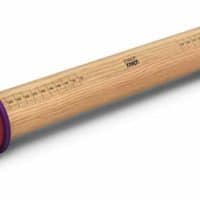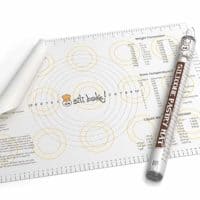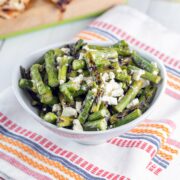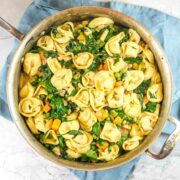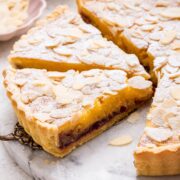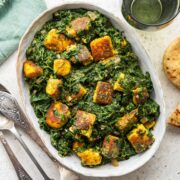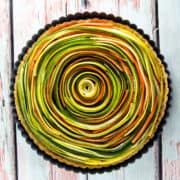No Fail Pie Crust
Pie lovers, rejoice! A recipe for the ultimate NO FAIL Pie Crust — with easy instructions and all the tips you need to make a perfect pie crust, every time!
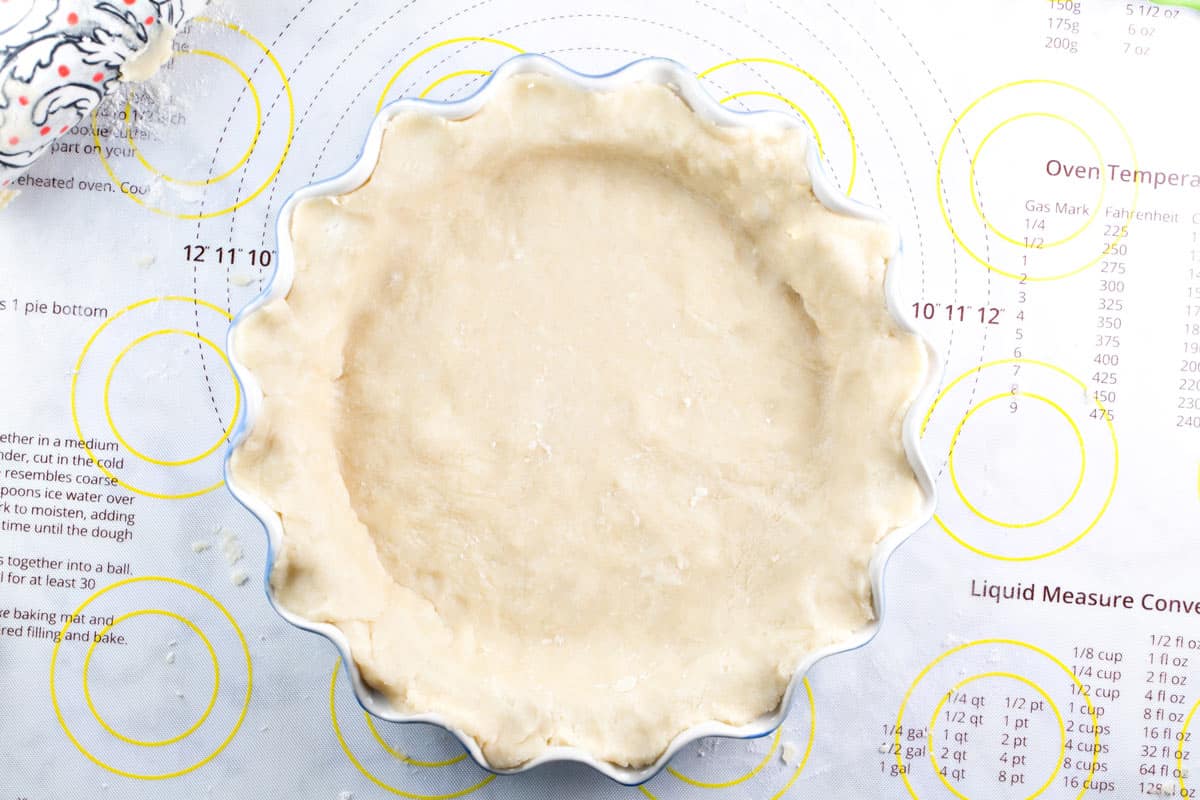
As fall swings into full gear, it’s officially my favorite season: PIE SEASON!
Even though summer fruit makes amazing pies, there’s something about fall that calls for a freshly baked pie. Apple pie. Pumpkin pie. Pecan pie. Sweet potato pie. I’ll take a slice of each, please!
So in order to prepare for pie season, let’s talk about the most basic ingredient for pies — the pie crust. And I’m going to share my absolute most favorite, super easy, practically guaranteed no-fail pie crust.
I’m going to start out by stating that there is nothing wrong with using a store-bought crust, be it the frozen-in-an-aluminum-pie-plate crust or a rolled refrigerated circle of dough crust.
These are both solid options – no one is going to stop and comment that the crust is especially delicious, but inversely, you also know you’re not going to wind up with some soggy monstrosity full of holes, either.
But rolling out your own pie crust really isn’t difficult; honestly, I find it incredibly relaxing to gently roll out the dough, slowly stretching the sides, feeling the chilled, stiff dough slowly give way.
It’s similar to my love of kneading bread, and why I will never own a bread machine – getting my hands in there is what I love so much about baking, and so rewarding, too.
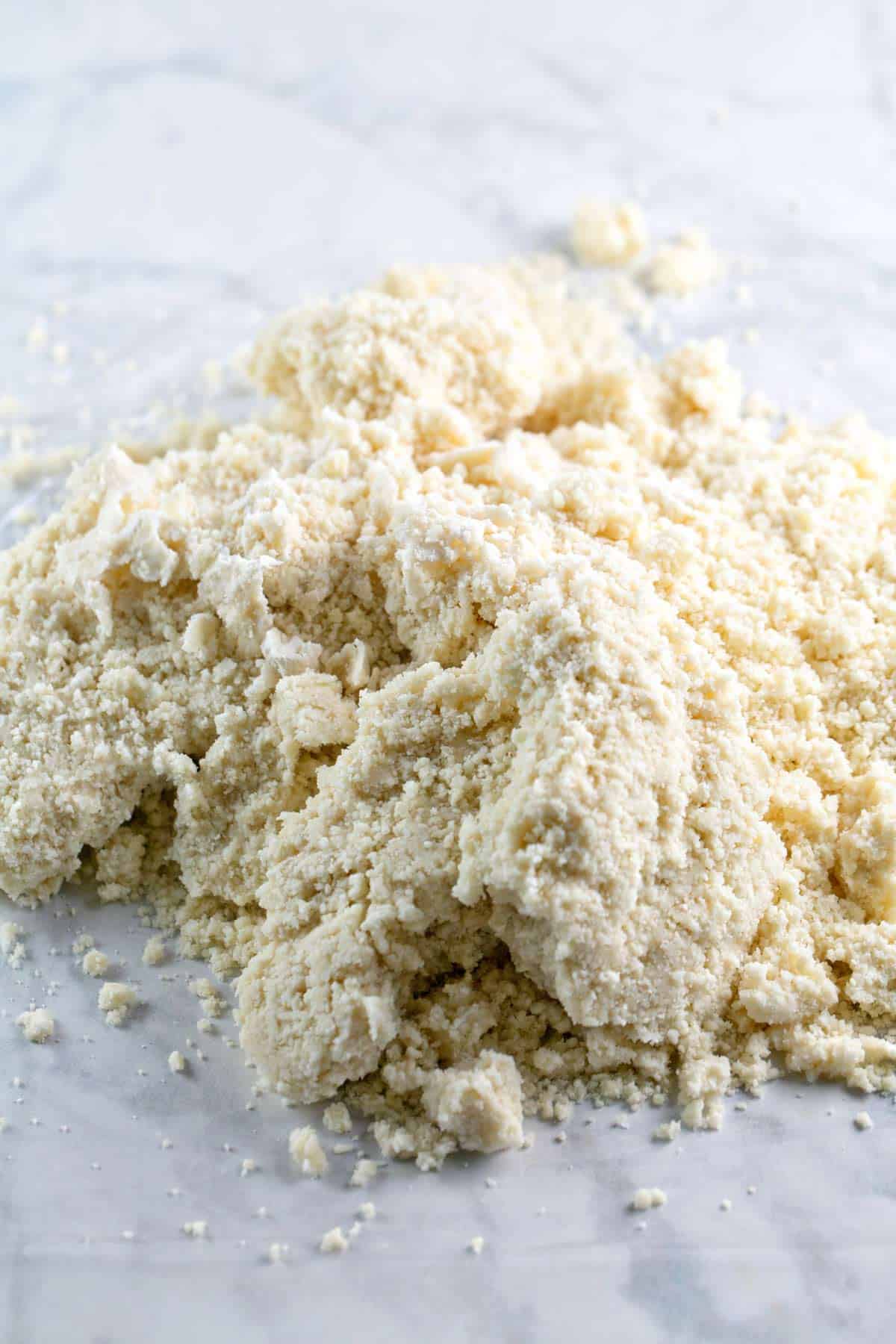
Finding the Perfect Pie Crust
Now, while I’ve mentioned that rolling out a pie crust isn’t difficult… choosing the right recipe can be. And this is where I’m going to save you the hassle of trying all the dud recipes because I’ve already done it for you!
Many years ago, I set on the quest to find the perfect rolled sugar cookie recipe, and low and behold – I found the perfect rolled sugar cookie recipe. Since then, I’ve turned my attention towards a perfect pie crust. And now, I’m here to share my recipe for a no fail pie crust, and super helpful pie rolling tips, with all of you.
I’ve tried LOTS of recipes, ranging from all butter to all shortening, using vodka instead of water, freezing and grating butter, freezing and thawing the dough, rolling the dough out warm and then chilling, chilling the dough and then rolling it out, freezing the crust before baking, etc.
And this crust recipe right here? It comes out perfectly every time. So much so that I’m deeming it a No Fail Pie Crust.
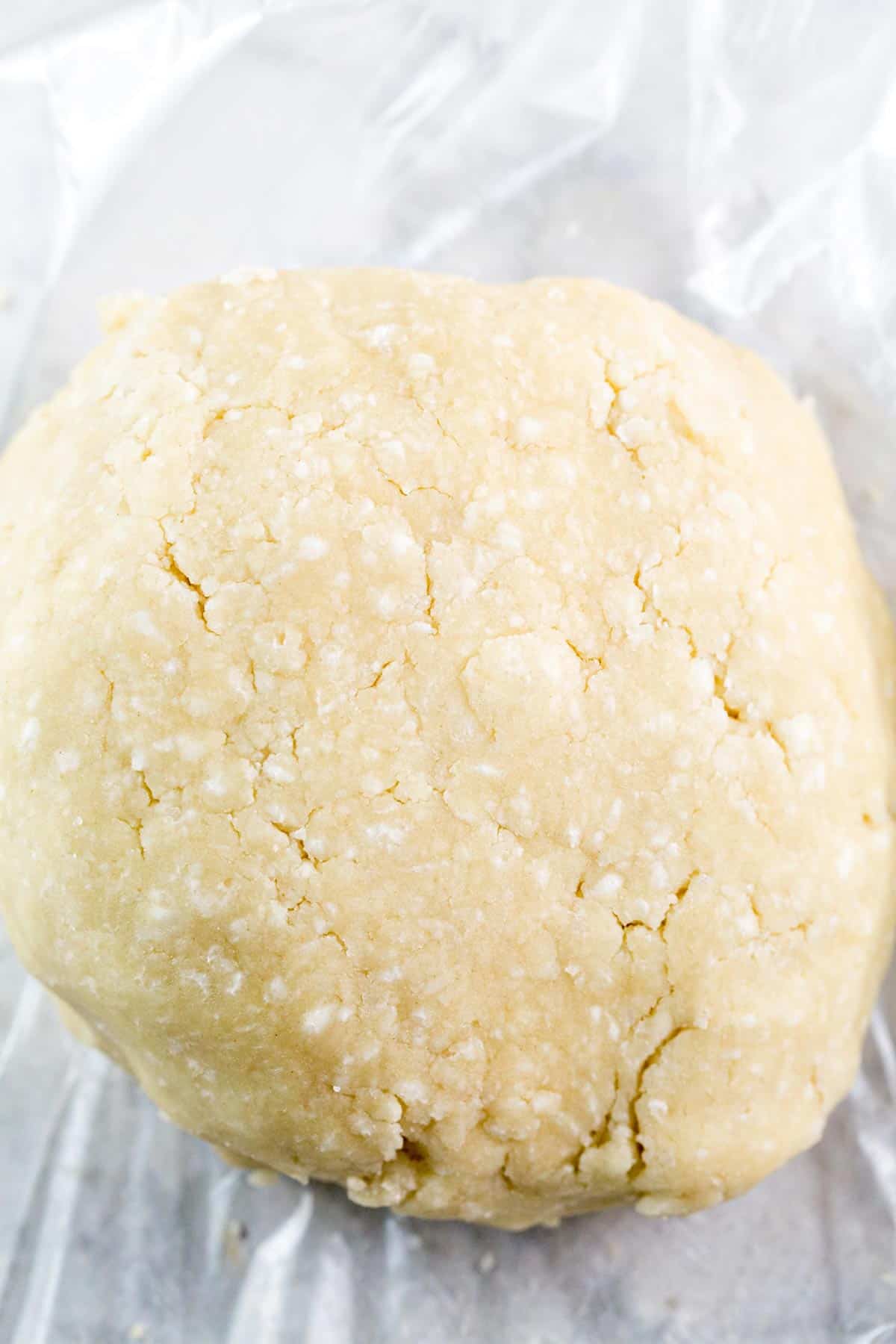
Butter vs Shortening in Pie Crust
The biggest debate of ALL in terms of finding the perfect pie crust recipe? Whether to use butter or shortening!
(Other options are lard, but it’s hard to find rendered leaf lard, and oil, but this creates a more crumbly dough than tender, so we’re leaving those options out.)
So let’s talk about what each does, and what actually makes the best pie crust!
Butter provides the best flavor and flakiness to pie crusts. Because it contains 15-20% water (unlike shortening, which is 100% fat), the water evaporates as the pie bake bakes and this steam separates layers in the dough, creating a classic flaky crust. However, butter has a lower melting point and is hard to work with — too soft and the pie dough will tear, but too hard and the dough is hard to roll out.
Shortening, on the other hand, has a higher melting point than butter, making shortening-based dough a dream to roll out. These pie doughs hold their shape beautifully in the oven but aren’t as flavorful as a crust made with butter.
So how are going to choose? We’re going to use BOTH to get the best of both worlds!
This No Fail Pie Crust recipe uses butter for flavor and water content to make a delicious, flaky pie crust. But we’ll also include just enough shortening to make the dough easy to roll.
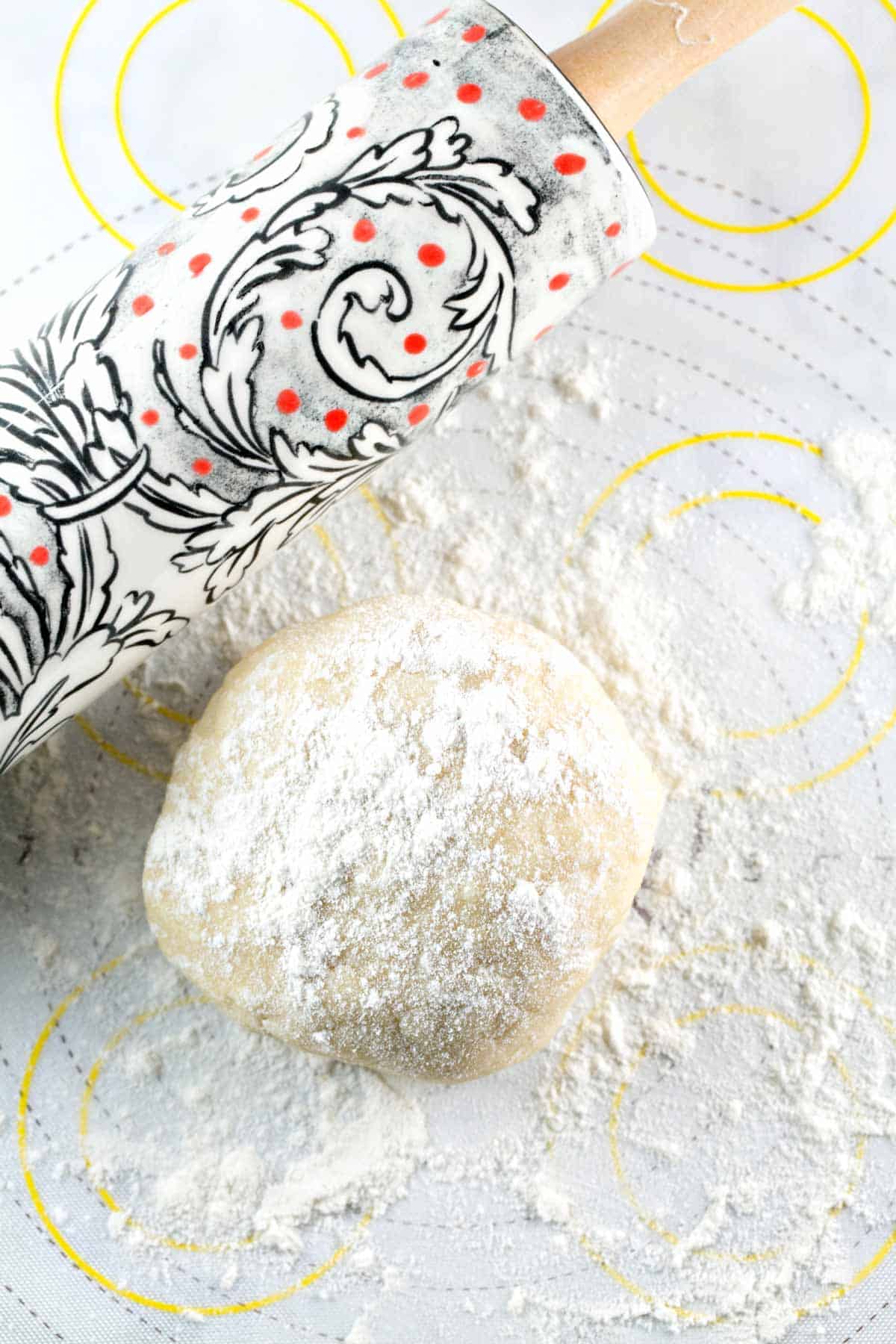
Cold Fat is Essential
Whether you opt to use butter or shortening (or my suggestion, both!), you’ll want to make sure that it is cold!
Cut your butter and shortening into small pieces and freeze them before starting to make the dough.
This serves two purposes: one, it makes the dough easier to handle. Two: it helps increase the flakiness of the finished crust. Why is this? It’s time for my favorite subject… kitchen chemistry!
Kitchen Chemistry
When cold butter is placed into a hot oven, the water in the butter evaporates, creating a perfectly flaky crust. If room temperature butter or shortening is added to the oven, however, it rapidly melts and separates out from the flour mixture, resulting in a soggy crust.
If you find the dough gets too warm while you’re rolling it out, pause and set it back into the refrigerator for 15 minutes before finishing. Working with dough that is just the right consistency and temperature is essential for the best pie crust!
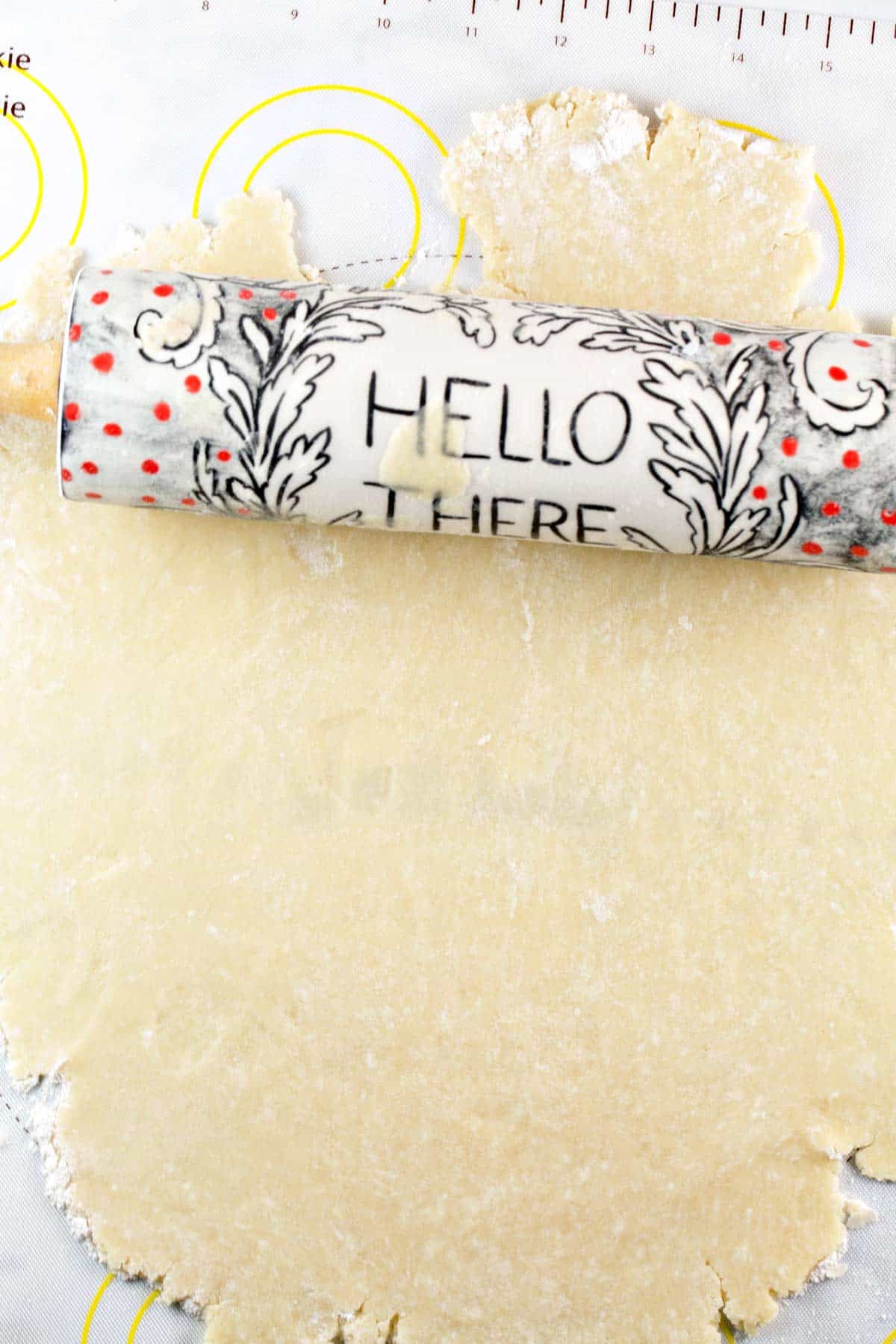
Tips and Tricks for A Perfect Pie Crust
Without further ado, here are my top tips for baking a great pie crust, regardless of what recipe you use:
- Keep your fat cold. Whether you’re dealing with butter or shortening, you want it to be as cold as possible.
- Pea-sized specks of butter should be visible in the mixture. The dough should be a little crumbly, a little shaggy, and little chunks of butter should still be present to create those pockets of steam. (Be careful of overmixing the dough if you use a food processor!)
- Refrigerate the dough after mixing – but not for too long. Okay, this isn’t entirely true – you can refrigerate the dough for as long as you want, but then you need to let it warm up slightly toward room temperature before rolling the dough out again. I’ve found 30 minutes to be a great length of time – long enough for the butter to rechill, but not so long that the dough breaks and crumbles when you try to roll it out.
- Roll carefully and slowly. Take your time when it comes to rolling out dough – but not too much time. Flour your work surface and place your circle of dough in the center. Roll back and forth over the dough with heavy, firm pressure. Don’t try to force the rolling in a circle; rather, pick up the dough and rotate it around. Don’t worry if you can’t get the dough into a circle (you can trim it later), if the dough cracks around the edges, or if you get a few holes or tears in the dough (you can patch them with the excess dough you cut from the edges). I usually find I need about 5 minutes to roll out pie dough – much less time and I’m too aggressive and the dough cracks, much more time and the dough starts to warm too much.
- Rechill the dough before baking. Pop the pie crust in the pie dish into the freezer for a few minutes before baking. It’s all about keeping that butter nice and cold.
- Build a protective barrier to keep the crust crisp. This one actually comes after you bake your crust, but I always add something to help prevent the crust from getting soggy. If you’re bringing a pie to a party and it will be devoured all at once, it’s not a problem, but we often sliver away at a pie for 5 days. After that much time, the juices from the pie start to seep into the crust, making it pretty mushy. For no-bake cream pies, I paint a thin layer of melted chocolate along the pie crust (after baking, before filling) as a moisture barrier. For filled fruit pies, I sprinkle a decent amount of flour and sugar along the bottom – the excess flour helps to soak up any juice, while the sugar starts to caramelize a bit and form that nice crust. You’ll see that I add this step to my blueberry pie recipe.
- Make plenty and freeze! The recipe I’m sharing below makes two layers of crust – one for the bottom of the pie and another for the top if you’re doing a double-crust or lattice-topped pie. If you’re making a crumble top, like my favorite blueberry pie recipe, you can freeze the leftover dough. The dough can be frozen at any stage – either in a ball to be rolled out after thawing, in the rolled out circle but not yet pressed into the pie dish, or in the pie dish. I usually double the recipe below and freeze the rolled-out crusts, meaning I can make a pie in no time at all when the mood strikes.
- Bake your pie on the bottom rack of the oven. Generally speaking, the top of the oven is the hottest part. For a pie, we want to make sure the bottom of the pie crust is fully baked and crispy before the top of the pie is overcooked. The best way to achieve this and avoid soggy, underbaked crusts? Put your pie on the very bottom rack of the oven.
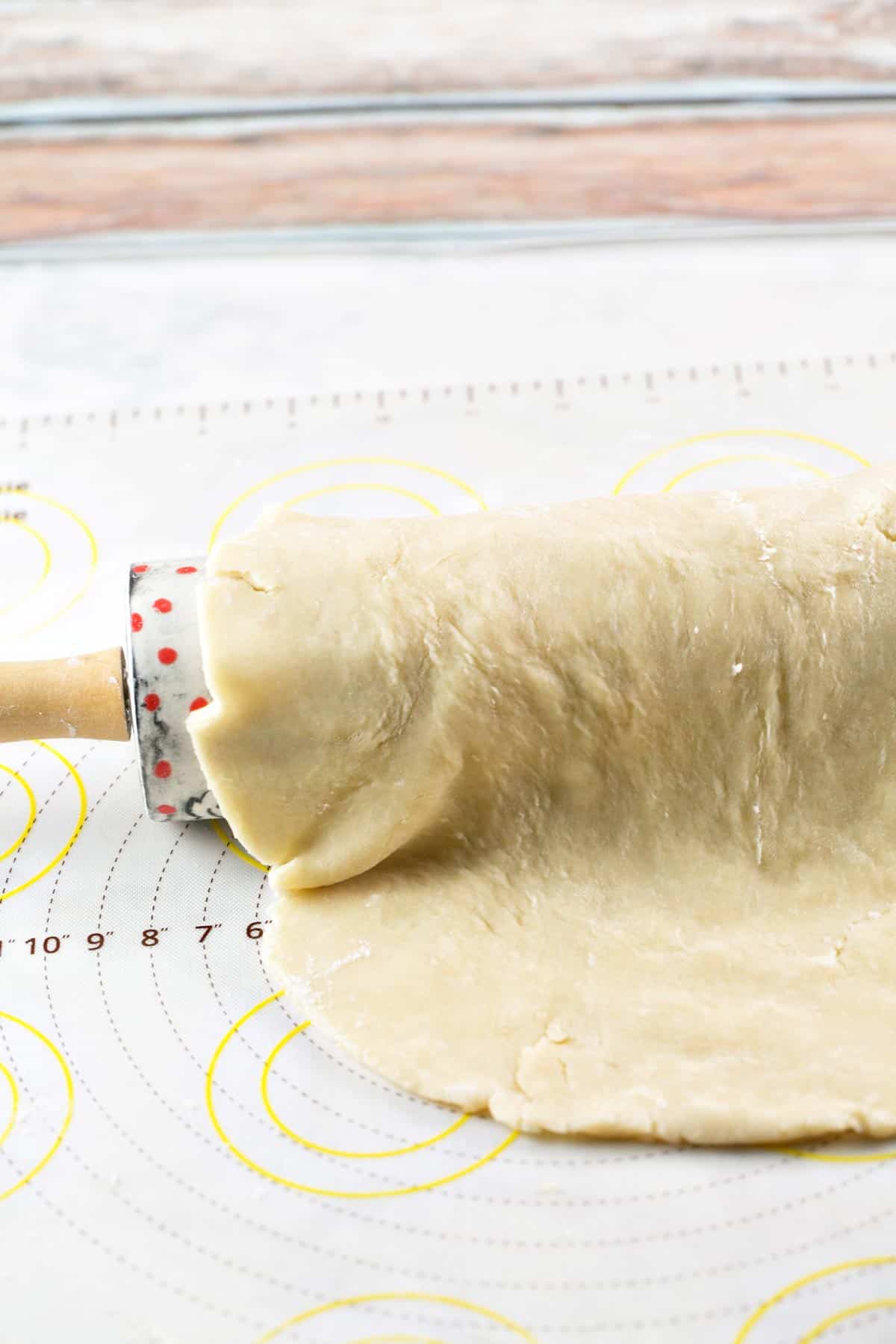
FAQs for No Fail Pie Crust
Absolutely! Just be sure not to overmix – using a food processor increases the risk of overmixing, which doesn’t happen when butter is cut into the flour by hand. There should still be small pea-sized balls of butter or shortening visible in the mixture.
Pastry flour has less protein than all-purpose flour and thus results in a lighter and flakier crust. The trade off, however, is that it’s harder to handle and roll because it’s so delicate. I make my pie crusts with all-purpose flour but you can absolutely experiment with pastry flour if you’d like.
This trend was kicked off by Cook’s Illustrated, which states that because alcohol doesn’t promote gluten formation, pie crusts will stay flakier even when a little extra moisture is added, making it easier to roll out the dough. I personally haven’t noticed a difference, but if you’d like to try, substitute half the water with vodka (using 3 tablespoons vodka).
Yes! Pie dough can be frozen before rolling out the pie (wrapped in plastic wrap and stored in a freezer bag) or after rolling out the crust and placing it in the pie plate (wrap the entire pie dish with plastic wrap and two layers of aluminum foil).
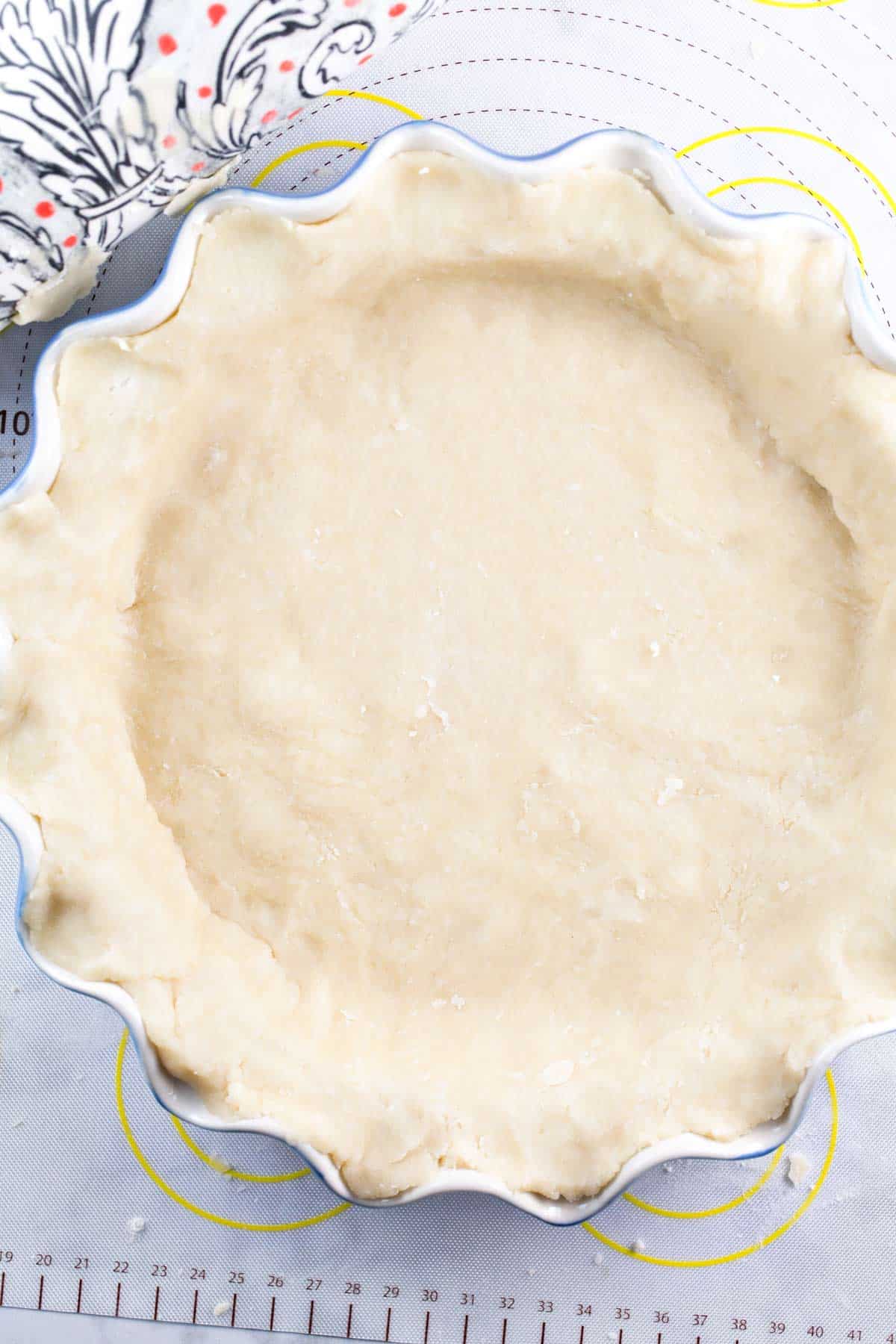
Favorite Pie Recipes
Now that you have the perfect pie crust, what should you do with it? Here are some of my favorite suggestions, both savory and sweet!
- Caramel Pear Pie with Oatmeal Cookie Crumble
- Chocolate Shoofly Pie
- Cherry Almond Pie
- Blueberry Rhubarb (Bluebarb) Pie
- Coconut Cream Pie
- Chocolate Oatmeal Molasses Pie
- Chocolate Bourbon Pecan Pie
- Nutella Swirled Pumpkin Pie
- Spiral Sweet Potato Tart with Maple Ricotta
- Flourless Chocolate Brownie Pie
- Spiral Vegetable Tart
- Almond Crumble Blueberry Pie
- Old Fashioned Banana Cream Pie
- Healthier Tomato Pie
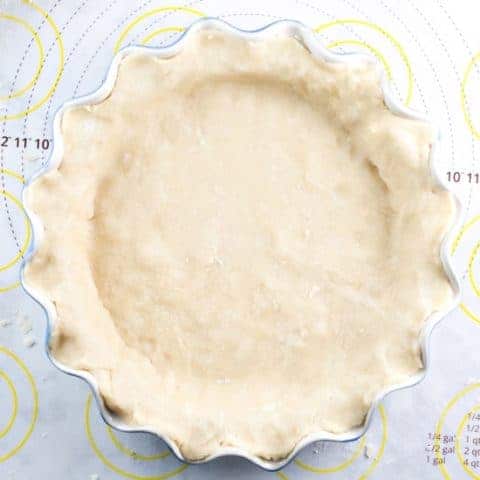
No Fail Pie Crust
The ultimate no fail pie crust — make a perfect crust, every time!
Ingredients
- 12 tablespoons (170 grams) unsalted butter, frozen for at least 2 hours
- 3 cups (360 grams) all-purpose flour
- 1 teaspoon salt
- 1 tablespoon sugar
- 1/3 cup (62 grams) vegetable shortening, frozen for at least 2 hours
- 6 tablespoons very cold water
Instructions
- Add the flour, salt, and sugar in a large bowl and whisk to combine. (Alternatively: add to the bowl of a food processor and pulse several times to mix.)
- Remove the butter and shortening from the freezer and dice into half-inch size cubes, using a very sharp knife. Add the butter and shortening to the bowl, cutting the butter into the flour mixture using a pastry blender or two knives, continuing until mixture is sandy and butter is the size of peas. (Alternatively: add butter and shortening to food processor and pulse for 10 one-second bursts, until the butter is the size of peas.)
- Add in the cold water and mix together with a fork, until the dough begins to form a ball. (Alternatively: pour into food processor and pulse several times, until the dough begins to form a ball.)
- Remove the dough from the mixing bowl or food processor (it will be very crumbly) and shape into two circles. Wrap in plastic wrap and refrigerate for 30 minutes.
- Roll the dough into a circle as described above, rolling from the center to the edge, turning and flouring the dough as necessary. Drape the dough over the rolling pin to transfer it to a pie pan.
- Once in the pie pan, trim the crust so that there is an approximately 1-inch overhang past the edge of the pie plate. Using this overhang, crimp the crust by pressing the dough between the pointer finger of one hand and your pointer finger and thumb of the other hand.
- Place prepared crust in freezer prior to baking.
Notes
- Make sure your fat (butter and shortening) is COLD before making the crust - freeze prior to use.
- Little specks of butter should be visible in the crust; this creates flaky layers as the crust bakes.
- If the dough is too cold, it will break while rolling, but if the dough is too warm, it will feel sticky. Adjust accordingly by letting the dough sit out for a few additional minutes or refrigerating the dough briefly during the rolling process.
- Once made, the pie dough can be stored unbaked in the refrigerator for up to 2 days or frozen for up to 3 months.
Recommended Products
As an Amazon Associate and member of other affiliate programs, I earn from qualifying purchases.
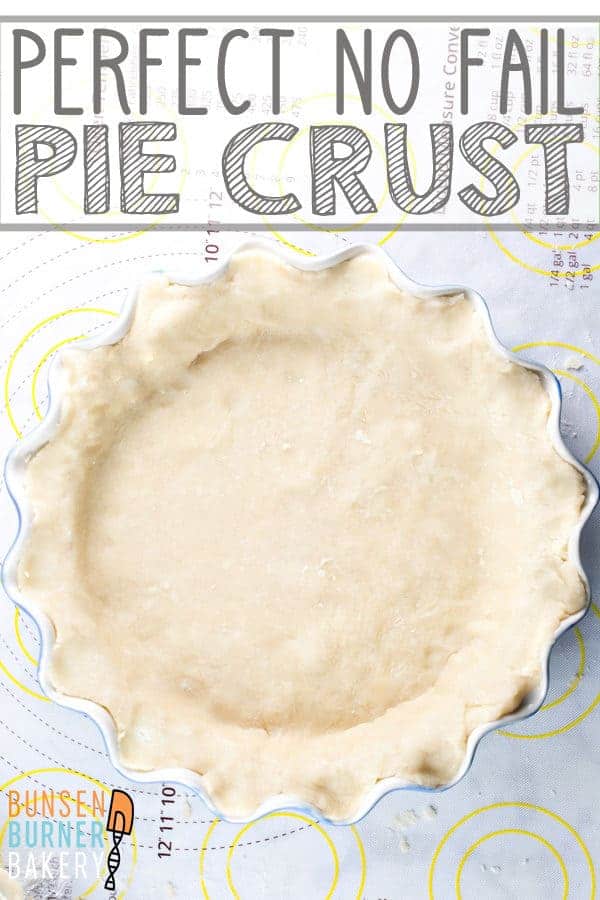
This recipe was originally posted in July 2015 and updated in October 2017.


